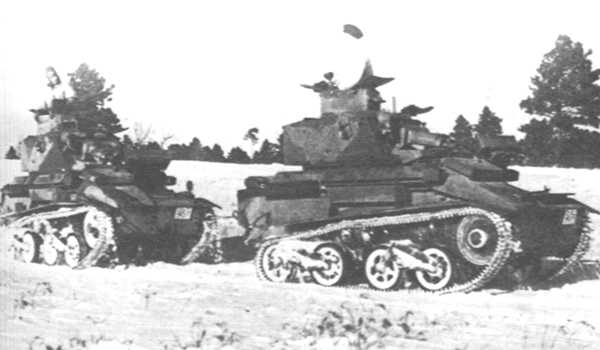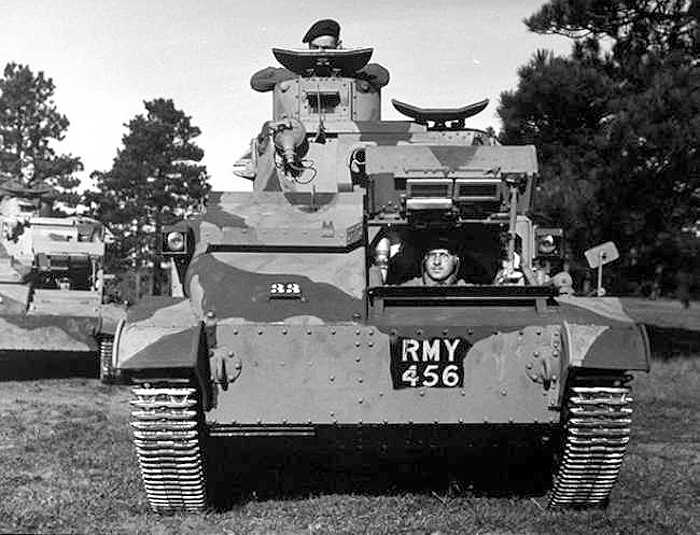
Join Amazon Prime - Watch Thousands of Movies & TV Shows Anytime - Start Free Trial Now

Light Tank Mk. VIB
The British Light Tank Mk. VIB was a decendent of the earlier Light Tank Mks.II, III, IV and V. The Mk. II was a production development of private venture Carden-Loyd Mk. VII and VIII tanks which had been supplied to British War Office A4 specifications in 1929. Vickers built these tanks and they were designated the Light Tank Mk. I by the British Army. The Mk. II had a similar hull, but incorporated a larger turret together with a Rolls Royce engine. The Mk. III had further modifications suggested by user experience such as a higher, roomier hull and a later type of Horstmann suspension which had angled coils rather than the earlier horizontal ones. The Mk.IV was a more powerful development of the Mk.III and reverted to the Meadows engine, as had been used in the Mk.I. The suspension was modified to eliminate the idler wheel and that required respacing the bogie assemblies. The hull was also reshaped at the rear to provide more space within. The Mk.V first entered service in 1935 and in that vehicle, the hull was extended to allow for the fitting of a two man turret, and two co-axial machine guns were also fitted. The larger turret incorporated a commander's cupola and another modification included the addition of a return roller to the front suspension bogies. The Mk.VI was identical to the Mk.V except that the turret was redesigned to provide room for the addition of a wireless set in the rear portion. In the Mk.VIA the single return roller was removed from the top of the leading bogie and attached to the hull side.
The Mk.VIB was mechanically similar to the Mk.VIA, except that certain modifications were made to simplify the production process and those included a one piece armoured louvre over the radiator and a plain circular cupola. The Mk.VI series entered production in 1936 and there were more Mk.VIBs produced than any other tanks of the series. The Mk.VIB had a crew of three comprised of a commander, driver and gunner. It had maximum armour thickness of 14mm and a minimum of 4mm. Armament consisted of one Vickers 0.5 MG and a Vickers .303 MG. It had a maximum speed of 35mph with a road radius of 130 miles.
Canada took possession of two Mk.VIBs in the Fall of 1938 as the political climate in Europe continued to darken. Another fourteen were received in the late Summer of 1939 and they were used in addition to the Carden-Loyd machine gun carriers at the Canadian Armoured Fighting Vehicle School at Camp Borden, to introduce Canadian units to the practical application of the theory of mechanization.
The Mk. VIB was restricted to a training role in Canada at the beginning of the war when any kind of armoured equipment was distinctly lacking. In Canadian service, it was generally considered to be a reliable vehicle, although it's light tracks were easily broken. As a result, it became common practise to carry a large number of spare links and pins to remedy that problem as best as possible. One common complaint among the original Canadian crews was that the vehicle tended to suffer from "reverse steering" in that the driver had to pull the left tiller bar to effect a right turn when over-racing the engine. This proved to make for "tricky" control of the vehicle, especially when travelling downhill at speed. An example of the Light Tank Mk.VIB survives at Worthington Park, CFB Borden.
 |
 |
Return to ARMOUR PROFILES page
Site Map
© Chris Johnson, 1997